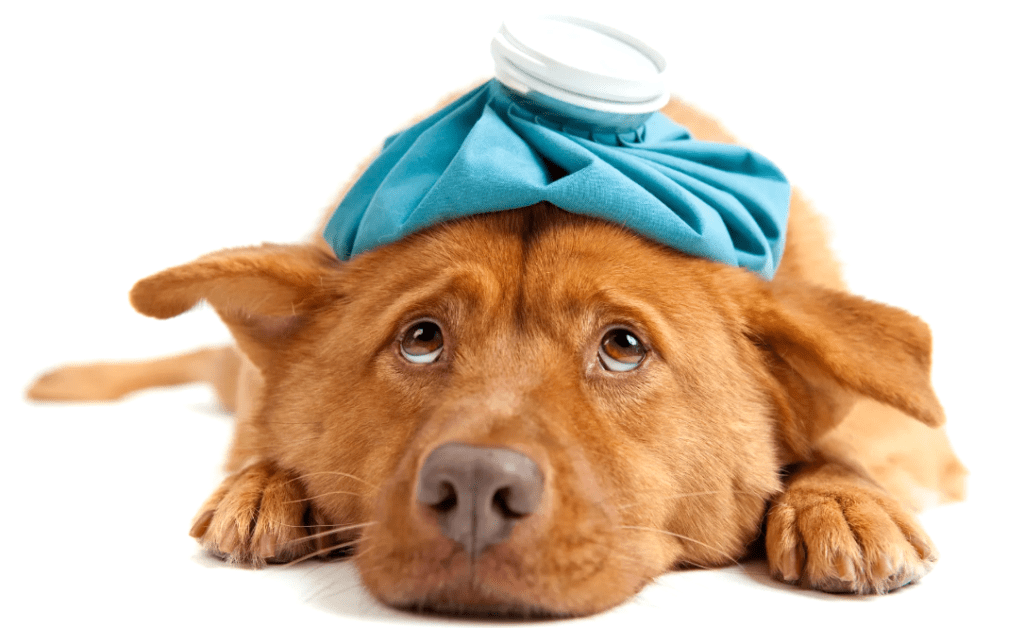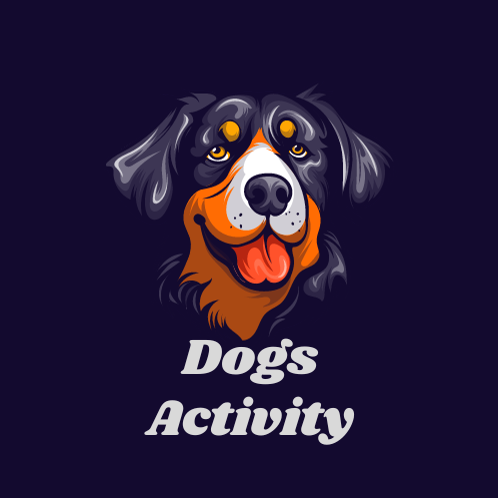
Our furry companions, dogs, bring joy, laughter, and unconditional love into our lives. As responsible pet owners, it’s essential to ensure their well-being. One of the most crucial aspects of caring for your dog is being vigilant about their health. Dogs, like humans, can fall ill, and recognizing the signs of illness early is key to providing prompt care. In this comprehensive guide, we’ll explore the various ways you can tell if your dog is sick. From physical symptoms to behavioral changes, we will cover it all, ensuring you can better understand your canine friend and take the necessary steps to ensure their health and happiness.
Chapter 1: The Basics of Canine Health
Before diving into the signs of a sick dog, it’s crucial to have a basic understanding of canine health. Dogs, like all living beings, are susceptible to a variety of illnesses, infections, and health issues. Familiarizing yourself with the basics can help you better identify when your dog is not feeling well.
1.1. Common Health Problems in Dogs
Dogs can suffer from a range of health problems, including:
- Infections: Bacterial, viral, or fungal infections can affect dogs just like they can affect humans. Common examples include kennel cough, parvovirus, and skin infections.
- Parasites: Dogs are vulnerable to external parasites like fleas and ticks and internal parasites such as roundworms, tapeworms, and heartworms.
- Allergies: Allergies to environmental factors, such as pollen or food, can lead to skin issues and other symptoms.
- Digestive Disorders: Problems like diarrhea, vomiting, and constipation can be indicative of underlying digestive issues.
- Orthopedic Issues: Arthritis, hip dysplasia, and ligament injuries are common orthopedic problems in dogs.
- Cancer: Dogs can develop various forms of cancer, including skin cancer, lymphoma, and bone cancer.
Understanding these common health issues will help you recognize the symptoms associated with them when they appear in your dog.
1.2. The Importance of Regular Check-Ups
Routine veterinary check-ups are a cornerstone of canine health. Regular visits to the veterinarian can help detect potential health problems early, often before you notice any symptoms. These visits include vaccinations, dental care, and discussions about your dog’s overall well-being. Your veterinarian can also provide guidance on maintaining a proper diet and exercise routine.
Chapter 2: Physical Signs of a Sick Dog
Dogs may not be able to communicate their discomfort in words, but their bodies often convey a wealth of information. Paying attention to the physical signs can be instrumental in identifying health issues.
2.1. Changes in Eating Habits
One of the earliest indicators of a sick dog is a change in their eating habits. These changes can manifest as:
- Loss of Appetite: If your dog suddenly loses interest in their food, it could be a sign of an underlying problem.
- Increased Thirst: An unusual increase in water consumption, known as polydipsia, may suggest kidney disease, diabetes, or other issues.
- Difficulty Chewing: Dental problems or oral health issues can make it painful for your dog to eat.
- Vomiting and Diarrhea: Frequent vomiting and diarrhea can be caused by various illnesses and can lead to dehydration.
If your dog’s eating habits change significantly, consult your veterinarian.
2.2. Weight Changes
Monitoring your dog’s weight is essential for identifying potential health problems. Weight changes can be indicative of:
- Weight Loss: Unexplained weight loss may be a sign of various conditions, from gastrointestinal issues to cancer.
- Weight Gain: Obesity in dogs can lead to numerous health problems, including diabetes and joint issues.
Regularly weigh your dog and be alert to any significant fluctuations.
2.3. Changes in Coat and Skin
A dog’s coat and skin can provide valuable insights into their health:
- Dull or Dry Coat: A lackluster, dry, or flaky coat may indicate a nutritional deficiency or skin condition.
- Excessive Shedding: While some shedding is normal, excessive shedding can result from stress, allergies, or skin problems.
- Lumps or Bumps: New or changing lumps and bumps on the skin should be examined by a veterinarian, as they could be signs of tumors.
- Scratching or Itching: Excessive scratching or itching may be due to allergies or parasites.
2.4. Changes in Bathroom Habits
A dog’s bathroom habits can provide essential clues to their health. Pay attention to:
- Frequent Urination: Frequent urination may indicate a urinary tract infection or diabetes.
- Straining to Urinate: If your dog seems to be in pain while urinating or is straining, it could be a sign of a urinary issue.
- Changes in Feces: Loose stools, constipation, blood in the stool, or changes in color and consistency can all be signs of underlying issues.
2.5. Changes in Mobility
Any alteration in your dog’s mobility can indicate orthopedic issues, pain, or other health concerns:
- Limping: Limping or favoring one leg can be due to injury, arthritis, or other musculoskeletal problems.
- Reluctance to Move: A dog that suddenly becomes reluctant to move or exercise may be experiencing pain or discomfort.
- Stiffness: Arthritis can cause stiffness and difficulty in moving.
2.6. Signs of Pain
Dogs can be remarkably resilient and may not always overtly display pain, but there are subtle signs to watch for:
- Whimpering or Whining: Whimpering or whining, especially when touched in a specific area, can be a sign of pain.
- Agitation: Restlessness, pacing, or an inability to find a comfortable position can be indicative of discomfort.
- Licking or Chewing a Specific Area: Excessive licking or chewing of a particular body part may signal pain or irritation.
2.7. Respiratory Changes
Respiratory issues in dogs are often associated with respiratory infections, allergies, or heart problems:
- Coughing: Frequent coughing could be a sign of respiratory infections or heart disease.
- Labored Breathing: Rapid or labored breathing might indicate distress or an underlying issue.
- Nasal Discharge: Discharge from the nose could signal a respiratory infection.
2.8. Changes in Eyes and Ears
A dog’s eyes and ears can also provide valuable information:
- Eye Discharge: Excessive eye discharge, redness, or cloudiness can indicate eye infections, allergies, or other problems.
- Ear Odor or Discharge: Foul odors or discharge from the ears can be signs of ear infections.
Regularly inspect your dog’s eyes and ears for any unusual signs.
Chapter 3: Behavioral Signs of a Sick Dog
Dogs communicate not only through their bodies but also through their behavior. Changes in behavior can be subtle but are essential to understanding your dog’s health.
3.1. Lethargy
Lethargy refers to a lack of energy and enthusiasm. If your dog is suddenly uninterested in playtime, walks, or seems generally sluggish, it could be a sign of illness. Lethargy can be caused by various health issues, including infections, pain, or internal organ problems.
3.2. Aggression or Irritability
A normally well-behaved and friendly dog becoming aggressive or irritable can be a sign that they are in pain or feeling unwell. Pain can make even the gentlest dogs more temperamental, so be mindful of changes in their behavior, especially if it’s out of character.
3.3. Excessive Panting
Dogs pant to regulate their body temperature, but excessive panting when they haven’t been active can be a sign of discomfort. It might indicate pain, stress, or an underlying health problem.
3.4. Excessive Sleeping
While dogs do sleep a lot, a significant increase in their sleeping patterns might be a sign of illness. Pay attention to changes in their sleep habits, especially if they become lethargic and less interested in their surroundings.
3.5. Changes in Social Behavior
Dogs are social animals, and changes in their social behavior can be revealing:
- Withdrawal: If your dog suddenly withdraws from social interactions or prefers solitude, it might be a sign of discomfort or distress.
- Needy Behavior: On the flip side, some dogs become clingier when they don’t feel well, seeking comfort and reassurance.
3.6. Excessive Vocalization
Excessive barking, whining, or howling can be a way for your dog to communicate that something is wrong. It’s important to differentiate between normal barking and behavior changes that indicate distress or pain.
3.7. Changes in Appetite for Non-Food Items
Pica, the consumption of non-food items like grass, dirt, or household objects, can be a sign of an upset stomach or nutritional deficiency. If your dog starts eating unusual things, consult your vet.
Chapter 4: Cognitive Changes in a Sick Dog
Cognitive changes in dogs often indicate underlying health problems. While they can be subtle, they are essential to watch for, especially in older dogs.
4.1. Confusion or Disorientation
Dogs suffering from cognitive dysfunction, often referred to as “doggy dementia,” may become confused or disoriented. They may have difficulty recognizing familiar people, places, or objects.
4.2. Loss of Housetraining
If a previously housetrained dog begins to have accidents indoors, it could be a sign of a medical issue, such as a urinary tract infection or cognitive decline.
4.3. Changes in Sleep Patterns
Disrupted sleep patterns, such as pacing at night, may be an indication of pain, discomfort, or cognitive issues.
Chapter 5: When to Consult a Veterinarian
Recognizing the signs of a sick dog is crucial, but knowing when to consult a veterinarian is equally important. While minor issues can often be addressed at home, certain symptoms warrant immediate professional attention:
5.1. Emergency Situations
In some cases, immediate veterinary care is necessary. Emergency situations include:
- Trauma: If your dog has been involved in an accident, has sustained injuries, or is bleeding excessively, seek emergency care.
- Bloat: Gastric torsion, or bloat, is a life-threatening condition that requires immediate attention. Symptoms include a distended abdomen, non-productive vomiting, and restlessness.
- Seizures: Seizures can have various causes and should be evaluated by a veterinarian.
- Difficulty Breathing: If your dog is struggling to breathe, it’s an emergency. This can be caused by various conditions, including allergic reactions and heart problems.
- Ingestion of Toxins: If your dog has ingested something toxic, such as chocolate, human medications, or chemicals, contact your veterinarian immediately.
5.2. Persistent or Severe Symptoms
If your dog exhibits persistent or severe symptoms, such as repeated vomiting or diarrhea, high fever, or signs of extreme pain, consult your veterinarian promptly. These symptoms could be indicative of underlying health issues that need professional assessment and treatment.
5.3. Behavioral Changes
Sudden and severe changes in behavior, such as aggression or severe lethargy, should not be ignored. They can be a sign of significant discomfort or illness, and a veterinarian can help identify the underlying cause.
5.4. Regular Check-Ups
Even when your dog doesn’t show any obvious signs of illness, regular check-ups are vital to maintaining their health. Annual wellness exams can help detect potential problems before they become severe.
Chapter 6: Preventive Measures
Preventing illness is as important as recognizing its signs. There are several proactive steps you can take to keep your dog healthy:
6.1. Vaccinations
Ensure your dog is up-to-date on vaccinations as recommended by your veterinarian. Vaccinations protect your dog from various contagious diseases, reducing the risk of illness.
6.2. Regular Exercise
Adequate exercise is essential for a dog’s physical and mental well-being. It helps maintain a healthy weight, prevents obesity-related health issues, and keeps your dog’s muscles and joints in good condition.
6.3. Proper Nutrition
Feeding your dog a balanced and nutritious diet is crucial for their overall health. Consult your veterinarian to determine the best diet for your dog’s age, breed, and specific needs.
6.4. Dental Care
Oral health is often overlooked, but dental problems can lead to systemic health issues. Regular dental care, including brushing your dog’s teeth and providing appropriate chew toys, can help prevent dental disease.
6.5. Parasite Prevention
Use preventive measures to protect your dog from external and internal parasites. Regularly administer flea and tick control, heartworm prevention, and deworming as advised by your veterinarian.
6.6. Grooming and Hygiene
Proper grooming and hygiene can help you detect skin issues, lumps, or other physical changes in your dog. Regular grooming also keeps your dog’s coat and skin in good condition.
6.7. Environmental Safety
Ensure your home and yard are safe for your dog. Remove hazards, keep toxic substances out of reach, and provide a secure environment to prevent accidents and injuries.
Chapter 7: Conclusion
Caring for a dog is a rewarding experience, but it comes with the responsibility of looking after their health. Dogs, like humans, can fall ill, and understanding the signs of sickness is vital for providing timely care. By being vigilant about changes in your dog’s physical condition, behavior, and cognition, you can better ensure their well-being. Remember that preventive measures are equally important, so consult your veterinarian regularly and follow their recommendations to keep your beloved canine companion healthy and happy. Your dog’s well-being is in your hands, so stay attentive and proactive in safeguarding their health and happiness.




Thanks for posting. I really enjoyed reading it, especially because it addressed my problem. It helped me a lot and I hope it will help others too.
You helped me a lot by posting this article and I love what I’m learning.